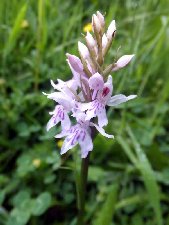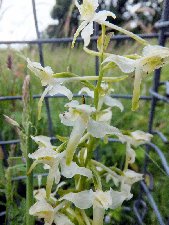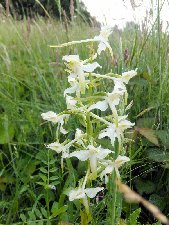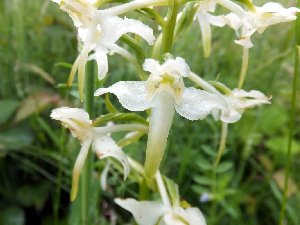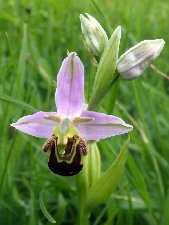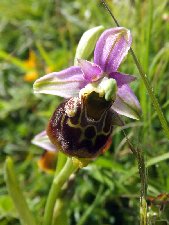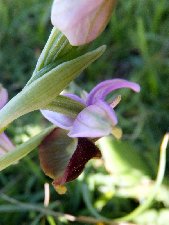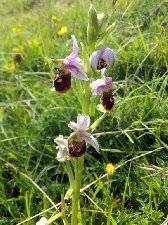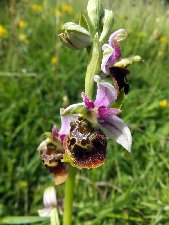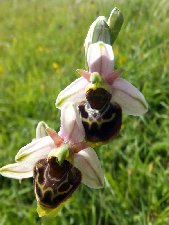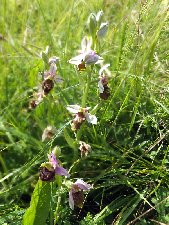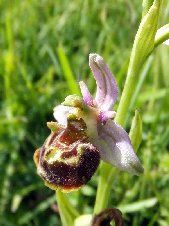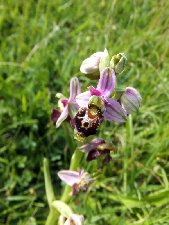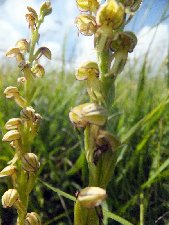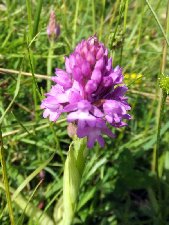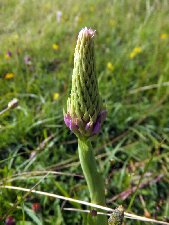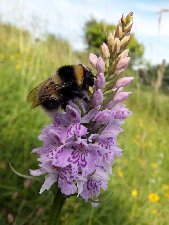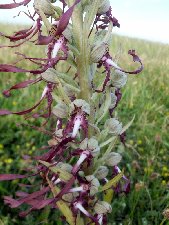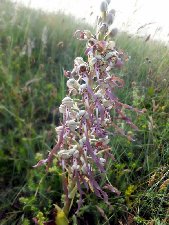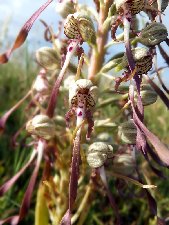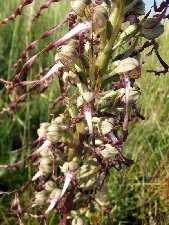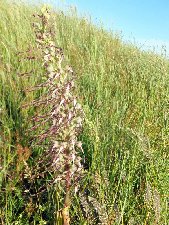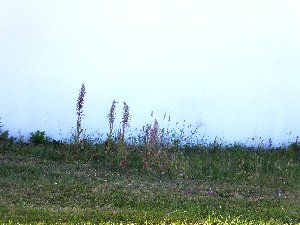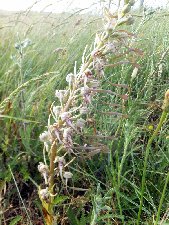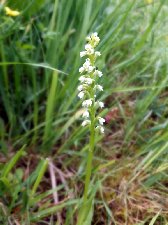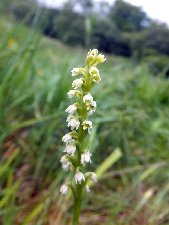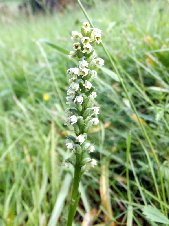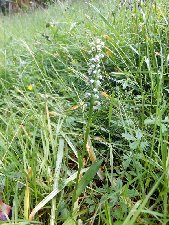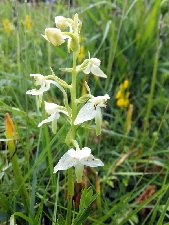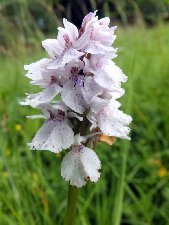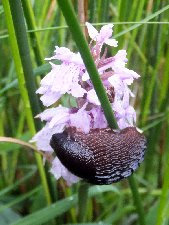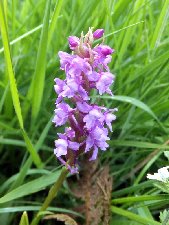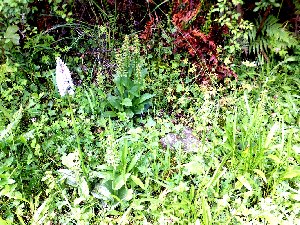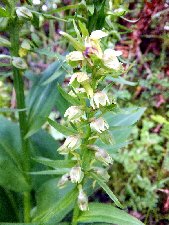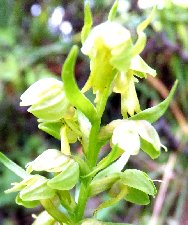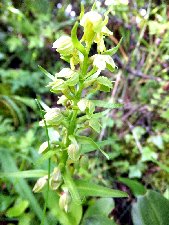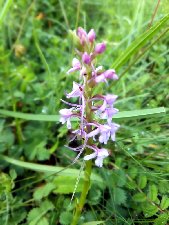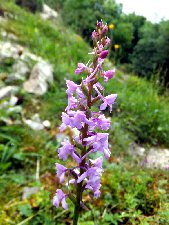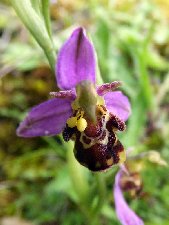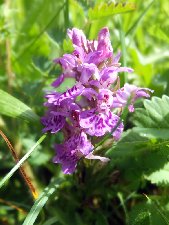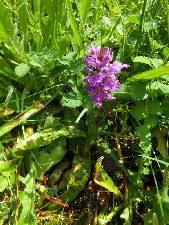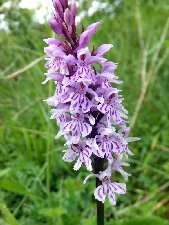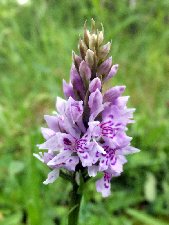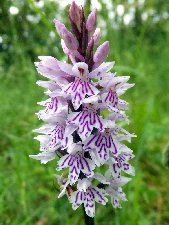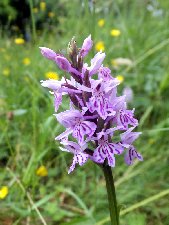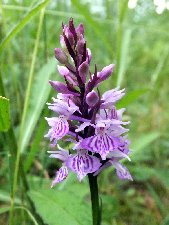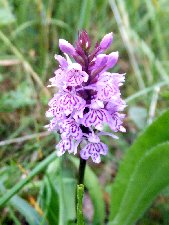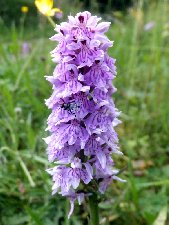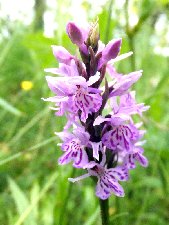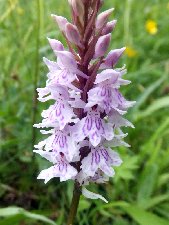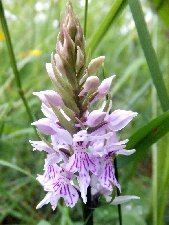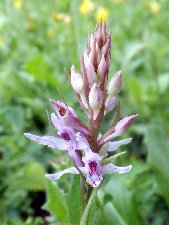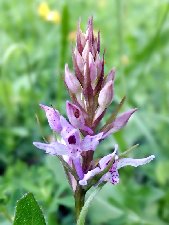|
|
|||||||||||||
|
|
|||||||||||||
 |
|
14th June 2016 Aston Rowant and Wye Reserve (SU 7246395870 TR 0796645325) Some stop-offs on the way down to catch a channel ferry seems a good idea, but these two sites are determined to cock a snook at me. Previously at Aston Rowant I have looked at the hillside on the north side of the M40 and only found Common Spotted Orchids. A trip to Kent in May was marred by a foot injury and I deemed Wye a step too far at the time in favour of other sites. This time I am on crutches still and it has been raining or will rain again. I do not want one pair of shoes for the holiday sodden before I have left these shores, and neither can I go too far from the car. At Wye it soon became apparent that there is just too much reserve for roaming and not enough time; and the nature trail where I presume most of the orchid locations could be is just too long and too hilly for someone on crutches with a painful foot. I spot a solitary Bee Orchid 14th June 2016 Near Folkestone A return to this gem of a site will probably be my last. As I arrive it is obvious that many people have been here to photograph the Late Spider Orchids from the amount of flattened vegetation on the bank. The volunteer warden arrives and tells me how sad it is that the trampling has not only claimed seven out of eleven Man Orchids growing there, and some Pyramidal Orchids, but also Late Spiders that are not flowering or yet to flower. There should be 135 plants and I can count 43 in flower which shows how many hidden plants there are on the site. Worse though, is that three Late Spider Orchids had been roughly dug up in the previous week. The warden is firmly of the opinion that social media was to blame for the site becoming a must-do place over the last few years, and I cannot dispute this. He also points a finger at BBC's Country File. Whilst not naming the site, a panning shot shows those who can read a map where it is. Caging the plants or roping the bank off would only highlight their existence. I suspect that permit only entry may happen soon. This gave me a lot to think about. I certainly will not be giving directions about this and other sites that are or could be sensitive. I shall also limit visits to such sites to once only. After all, once seen should be enough. There has to be a way to allow access without compromising conservation. 14th June 2016 Sandwich Bay (TR 3616958047) A third visit here, partly working up an appetite for a nice pub meal in the town, and partly to view the Lizard Orchids once more. They need a few more days before being at their best (my first visit in 2013 was just a few days later in the year yet barely a few were in flower - a `late' year), and today there is a bit of a breeze. The upside of this though, is that the lizard tails are being blown horizontally making for some interesting photos. This is a bit of a mixed population with some being more brightly coloured than others, but I still think this must be one of Britain's most exotic flowers. We note how the homeowners have carefully mown around the plants which grow like weeds in their lawns and get a shot of a row growing in front of a garden wall. 25th June 2016 Vicarage Meadows (SN 8493352652) The journey here is a bit of a trek, and the last few along a single track road from Beulah seem to take forever. On arrival it is apparent that there has been a recent massive downpour; the track beyond the former farmhouse is a stream, and the field before the main meadow is quite waterlogged. Obviously, the aim of this visit is the see the elusive Small White Orchid which eluded us on a previous trip. On arrival we can see plenty of Heath Spotted Orchid and Heath Fragrant Orchid, but the Greater Butterfly Orchids are only represented by a few plants. That said, I won't be roaming too far on my crutches (praying I can get rid of them soon) as the site is uneven and on a bit of a slope. We find two Small Whites, one each, quite quickly so have achieved my aim. Actually the flattened grass in front of them was a giveaway. My personal opinion is these must be the most boring members of the family. The best that can be said is that they look delicate, but even the common name is a bland unimaginative description. Lady's-tresses are similar and smaller, but have that nice spiralled inflorescence. I shall not need to visit here again and hope I haven't squashed anything today - see my comments under Folkestone below. A couple of the Heath Spotted Orchids have invertebrate visitors (see pics), but only one is a possible pollinator. Back here again firstly to have another look at the big Frog Orchids. A good examination of them shows them to have typical flowers. It was a thought that crossed my mind that these orchids size may be hybrid vigour. Myself and others would have noticed this, but having looked specifically for any differences in the flowers, I can rule that out. Simply they are a group of very large Frog Orchids showing vegetative reproduction (unusual in this species), essentially lacking any xanthocyanins (like most smaller specimens here), with longer bracts than normal, and flowering a month later than the smaller specimens. Perhaps there is something in the soil, or something specific to this corner of the site that influences all these differences from the norm. The Common Twayblades are still in flower, but we are a tad too early for many of the Chalk Fragrant Orchids to be in flower. These show how the identification of Fragrant Orchids can be tricky especially with few examples. Using Harrap as a guide, these have the much wider than long lip and (largely) horizontal sepals of the Marsh Fragrant Orchid. In other respects they match Chalk Fragrants, including the scent and especially the flowering period. Also a first for Eryrys when a Bee Orchid is spotted half way up a slope. The later flowering of orchids at this location is reinforced by this having only its second flower just opened. I noted that the temperature here was 4C cooler than than vack down in Wrexham. Onto Dactylorhiza and there is an oddity found. It stands out from the Common Spotted Orchids on site, sufficient for me to consider it as something different. The colour is clearly deeper and the lip patterns are unlike those on the CSOs. It is a rather stubby densely flowered plant compared to the taller lax flowered CSOs. The leaves are spotted, but are wider and shorter than one expects from the CSO. Despite it being far from its usual western coastal locations I am considering a stray example of the Welsh Marsh Orchid (Dactylorhiza purpurella cambrensis). The Dune Helleborine has been found at more inland locations and in greater numbers than its originally recognised coastal sites, and may be a precedent. Harrap describes this as (abbreviated) boldly spotted leaves, slightly paler flower colour to the Northern Marsh Orchid so lip patterns have more contrast. Lip is distinctly 3-lobed, slightly reflexed at the side. This description seems to fit this specimen. A paper by Bateman and Denholm from 1983 (naming this D. majalis occidentalis var cambrensis) provides a comparable description. There have been alternative suggestions: hyperpigmented Common Spotted Orchid, Common spotted var alpina, and D. xvenusta, the hybrid of Common spotted and Northern Marsh Orchids. These are possibilities, and the latter by someone who knows his stuff and may have seen the same plant last year, but the image evidence swings me towards var cambrensis. The Common Spotted Orchids here are quite different to the above specimen. They all have the characteristic tri-part lip with pointed middle lobe, and the patterns are not as heavy and tend towards stripes as opposed to loops and curves. None have a background colour as deep at the presumed cambrensis pictured and described above. When I wrote up my last visit here from 6 weeks ago I mentioned looking for Common Spotted x Frog hybrids. Well, I did look and at first I thought I had succeeded. Is this a hybrid, deformed or savagely nibbled. One suggestion was a peloric Common Spotted Orchid; one where the vertical symmetry of the flower is swapped for radial symmetry - an interesting idea. Leaving Eryrys passing the entrance to the quarry near the Graianrhyd crossroads I saw sizable colony of Common Spotted Orchids on the roadside. Probably more and different orchids within that site.
|
|
|
||||||||||||||
